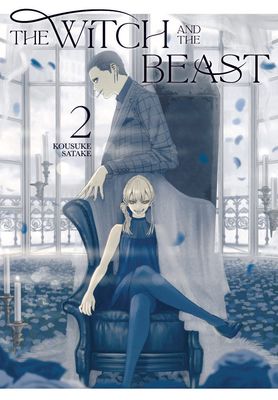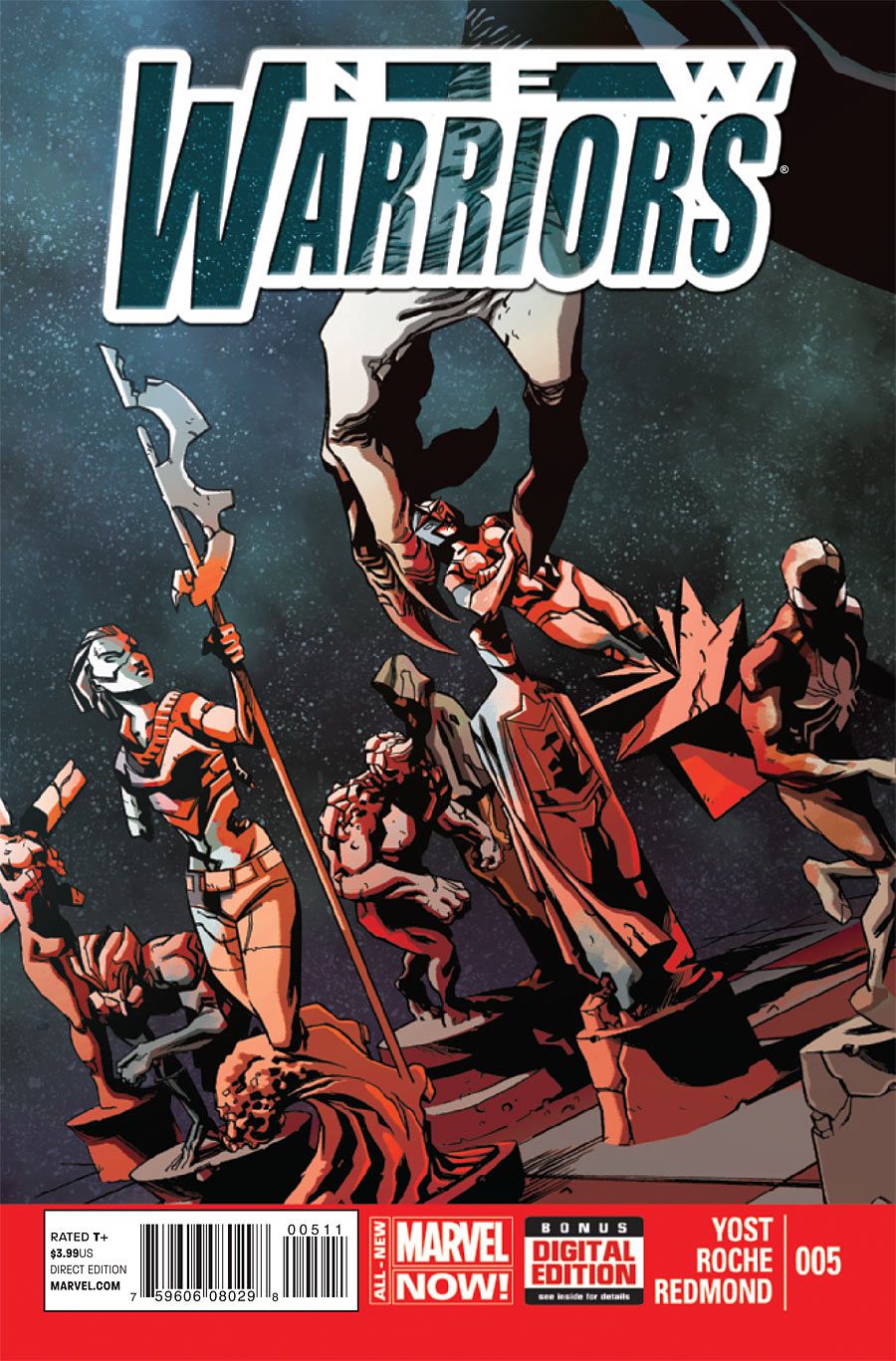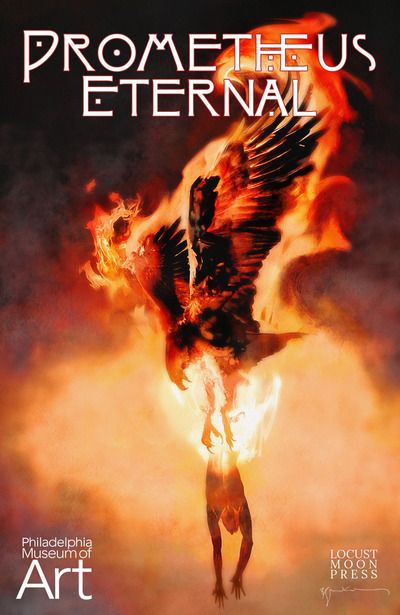Hey, y’all! We’ve done it again! The whole alphabet! A–Z with fairytales, folktales, and myths. We went in a bit of a different direction on this journey, looking at stories that were either western in origin and reimagined through other lenses, stories that were coopted and have now been retold by the people to whom they originally belonged, or upcoming stories about which I’ve noticed people voicing concerns for culturally related reasons. There do seem to be some cross-cultural ur-stories (e.g. great floods, the taming of primordial chaos, and, oddly, vampires?) that I’m planning to stay away from since they’ve already been fed through a truly staggering number of cultural perspectives. If I tend toward manga it’s because that’s what I’ve read most widely in comics originating outside of the U.S. so far, but I am actively working to widen my perspective and hey, if you have any recommendations, please send them to @BookRiot. Full disclosure: I have repeated books a few more times than I normally allow myself to do in this ongoing series. Specialized topic and I’m waiting on some debt volumes. I promise if it got extra airtime, it’s an exceptional read.
U: Ukiyo-e
Something Wicked From Japan: Ghosts, Demons & Yokai in Ukiyo-e Masterpieces by Ei Nakau, Hokusai Katsushika, and Hiroshige Utagawa
Yokai (supernatural monsters), Yūrei (ghosts), Oni (demons), and Kaijin (sorcerers) were common and popular subjects for Ukiyo-e, woodblock prints created during the Edo period. Many of the haunts and hell raisers that came to vivid life as visual art had their origins in the folk tales and ghost stories that came before. And while these Ukiyo-E may not technically be comics in and of themselves, they certainly paved the way as widely distributed, pop culture iconography, the shape of which can still be seen in manga, manhua, and even western comics today.
V: Vulture
Lore Olympus by Rachel Smythe
I don’t read a ton of online comics because I am an old and I have trouble focusing on screens for too long, plus too many hours in staring at the glowing box (in front of which I already spend most of my day) tends to make my migraines worse. I do, however, make an exception for Lore Olympus because it is an absolutely magical, wonderful, heart breaking, healing retelling of the Hades and Persephone myth in which consent figures heavily and everyone is just trying to do their best. Except Zeus and Apollo; those guys are just assholes.
Despite their bad earthly reputation, vultures were sacred to Hades because they were able to “consume death and produce life.” It helped keep the balance by scavenging and disposing of dead matter. Considered a descendent of the griffin, the vulture was also an avenger of wronged nature spirits.
W: “Wandering Jew”
The Witch and the Beast Vol. 2 by Kousuke Satake
Okay, so. I picked this one for two reasons. The first is that I recently discovered there are more people than I would have anticipated who don’t know how to discern whether they’re reading Jewish history or white supremacist propaganda. You’d think the line would be clear, but apparently it is not. So, since we’re here anyway, I’m going to take this opportunity to educate a bit.
Characters who did a Bad Thing and are cursed to live until X condition is fulfilled are present in many mythologies and folklore canons across the world. It’s a great trope to play with and an effective way to teach ethics. Awesome. Great. Let’s do it.
However. The aforementioned incarnation? The “Wandering Jew” specifically? My friends, the term “Wandering Jew” is an ethnic slur.
Does the character have its origins in the Tanach (what Christians call the Old Testament; for us, it’s the only testament)? It does, in the person of Cain who was sentenced to wander the earth after doing the ur murder. He is not called the “Wandering Jew.” Cain predates Judaism. He was just “that guy.”
The idea of the “Wandering Jew” as an individual who insulted Jesus in some way as Jesus approached Golgotha likely has its origins in either Matthew or John (New Testament books. Not part of our thing). Jesus forgave this person, sometimes named as a disciple, and said something to the effect of, “Some who are standing here will not taste death before they see the Son of Man coming into his kingdom.”
Though in some versions of the tale, the character is an exorcist or preacher (which…if he’s preaching Christianity and the return of Jesus, calling him Jewish is its own issue, but we’ll leave that for now), by the Middle Ages the story had become an excuse for the persecution of Jewish people across Europe and the destruction of Jewish communities in Germany, Austria, and other nations in Central Europe. In the 19th and 20th centuries, both it and horrific caricatures of the figure were used as arguments against Jewish emancipation in Prussia, Germany, and France. Arguments later adapted and further propagated by the Nazis.
So. One more time for the friends in the back: eternal character who wanders the earth doing penance for some crime or other. Cool. If that character is referred to as a/the Wandering Jew? Stop. What the hell are you talking about? Do. Not. Pass. Go.
I’m definitely getting the eternal wanderer vibe from Asaf, one half of the duo leading Kousuke Satake’s The Witch and the Beast, a man sent on witch hunting missions with a feral, creature-possessed young woman who has made a career of holding a grudge and gives zero effs about bystanders, no matter how innocent they may be. Asaf wears a coffin strapped to his back wherever he wanders, chain smokes, and manages to maintain preternatural calm even when the world is quite literally burning down around him. No one is that chill, not unless they’ve had a lot of practice. No one’s used the *ahem* sobriquet yet and I really love this book so fingers crossed I don’t have to throw it out the window of moving vehicle.
X: Xiezhi
New Warriors Vol. 5 by Christoper Yost, Marcus To, Dave Curiel, and Joe Caramagna
Created by Christopher Yost and Marcus To, Mark Sim is one of the new Inhumans whose genetics manifested after the explosion of the Terrigen bomb (2014, the same time Kamala Khan became the new Ms. Marvel). Mark’s powers include being able to absorb energy and re-channel it into blasts that emerge from his mouth; if he absorbs enough, he also transforms temporarily into a form with many of the features of a creature that appears in both Korean mythology and Chinese mythology. Called haechi in the former and xiezhi in the later, it’s generally described as a bull with one horn that helps settle disputes by biting the party in the wrong or goring them with its horn.
Y: Yurei
xxxHolic by CLAMP
The thing that brings Watanuki to Yûko’s shop, at least ostensibly, is his wish to be rid of the ability to see the spirits who haunt him constantly no matter where he is or what he’s doing. Shopkeepers, of course, aren’t in the business of giving gifts; they must be paid for their wares. Yûko’s price for granting Watanuki’s wish? He’ll work for the “space-time” witch for as long as it takes to work off his debt. Of course, she doesn’t tell him exactly how long that will be or that additional favors will add to the length of his employment or that, along with cooking and cleaning and keeping her glass full with beer or sake or wine, he’ll being using his abilities to perform death-defying exorcisms, communing with supernatural creatures, trying to avoid his crush’s bad luck, hanging out with his rival’s grandfather’s wise spirit in dreams, and all other manner of adventure. And things will only get more intense as a prophesied moment draws closer.
Z: Zeus
Prometheus Eternal by Grant Morrison, Paul Pope, Dave McKean, Bill Sienkiewicz, Yuko Shimizu, and Others
Ugh, fine, this is ending up being the entry of exceptions. My intention was to stay away from the stories we all know; however, in my search for “bird that ate Prometheus’s liver” I stumbled across the fact the Philadelphia Museum of Art commissioned a one shot comic to accompany their 2015 “Wrath of the Gods: Masterpieces by Rubens, Michelangelo, and Titian,” which included one of the gallery’s star pieces, Rubens’s Prometheus Bound. As many of you are doubtlessly aware, the “fine arts” community and the “comics” community don’t always place nicely together, and the fact a world famous museum commissioned a comic as an integrated part of major exhibition is huge. Like, me telling you to go spend money on something Grant Morrison spearheaded huge.
And there you have it. Fairytales, folklore, and myths in comics from A to Z. Villains next? Colors? Jewelry? Hit me up @bookriot on Twitter and let me know what you’d like to see!
Source : Comics A-Z: Fairy Tales, Folktales, and Myths from Ukiyo-E to Zeus




















